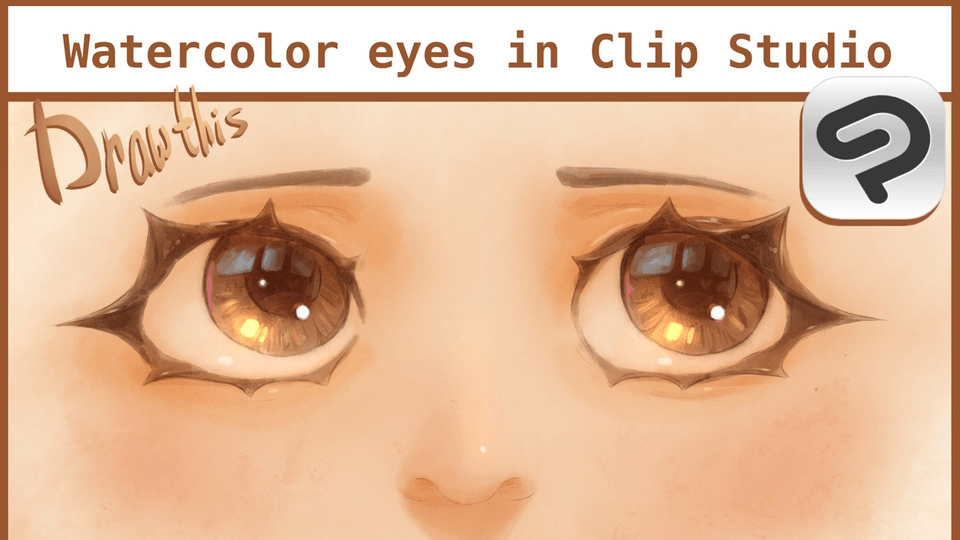Drawing Long Hair for Anime Characters
Hello! My name is Liz Staley and I’m a long-time user of Clip Studio Paint (I started using the program back when it was known as Manga Studio 4!). I was a beta-tester on the Manga Studio 5 program and for Clip Studio Paint, and I have written three books and several video courses about the program. Many of you probably know my name from those books, in fact. I write weekly posts on Graphixly.com and on CSP Tips, so be sure to come back every week to learn more Clip Studio Tips and Tricks from me!
Last week I talked about some considerations for drawing short hairstyles on characters. So it only makes sense that this week we talk about longer hairstyles! I love drawing long hair, whether on anime characters or on the horse portraits that I mostly do now. I especially like drawing flowing hair that is blowing in the breeze. It’s so much fun! We’ll get to that though, because like with short hair there’s a few things we need to take into account first.
In this article we will cover the following topics:
Parts and Origin of the Hair
Adding Movement
Let’s dive right in!
Parts and Origin of the Hair
In the article about short hair from last week, we first talked about hairlines and how they can change the look of short hairstyles. You should also give some thought to the hairline when drawing long hair, especially if the character doesn’t have bangs. But usually with longer hairstyles you really need to think about how the character parts their hair or where the hair is growing from on their head. (Though if you’re going to draw the character, say, with their hair wet and slicked back in one scene, you will need to consider the hairline in that instance because it will be visible then!)
If you haven’t seen my short hair article, you can find it here: https://tips.clip-studio.com/en-us/articles/6373
In the hairstyles below, the pink line or dot indicates the part of the hair or the general point where all the hair is growing out of. Note how different each style looks because of where it falls from.
Adding bangs can drastically change the look of a hairstyle. The examples below all have the same basic chin-length bob hairstyle but different bangs. Note how much they change the overall look and feel of the character!
So just like short hair, we need to make sure that we think about where the hair is coming from and how that will affect the shape of the style. But another fun thing about drawing longer hair is being able to capture tons of movement!
Adding Movement
If you’ve seen a lot of my horse art (or my anime art before I started largely drawing animals) then you probably have realized that I love drawing flowy, blowy, long strands of hair that curl in the wind. The images below are just a small sampling of my obsession from the past few years.
But it can also be very easy to completely “lose the plot” when trying to add movement to long hair, whether that movement is from wind or from a character doing an action.
In my article about short hairstyles, we talked about thinking of the hair in sections instead of separate strands, and using this mindset can also help when adding movement to longer hair. Remember to not draw every single strand of hair on your character’s head and instead think of the hair as larger pieces. When you look at a real person’s hair, it usually naturally falls into larger bundles instead of each strand moving individually (especially in people with wavy or curly hair!)
Before starting to draw your hair, determine the motion of the wind or the motion of the action. Remember that hair, especially long hair, will have follow-through when your character is moving and provide secondary motion to the main action. If your character is jumping down from somewhere, the hair will fly up. If they are quickly running forward, the hair follows along behind. If your character has been moving and suddenly makes a sharp turn and changes direction, the hair will have follow-through as it moves to catch up to the new direction.
When drawing hair moving in the breeze, keep the weight and thickness of the hair as well as the strength of the wind in mind. Very long and very thick hair tends to move less in light breezes. In real life, I have quite thick hair, so in a gentle breeze what tends to blow around the most is the short bits of hair around my hairline and not the bulk of my hair.
To draw out the moving hair, determine the direction of the wind or the direction of the character’s motion. Block out the shapes in large sections first. You can then add curling tendrils and smaller sections to add to the feeling of the motion, as in the example above with the smaller tendrils overlapping the main portion of the hair. Adding some curl and extra motion to the ends of the hair can look more dramatic.
The strength of the breeze can also change how much the hair moves.
A gentle breeze will make the hair just move slightly. But the stronger the wind, the more unruly the hair can get! Adding some longer strands blowing in front of the face can add some extra motion and drama. (Of course in real life having your hair blow in your face can be painful and annoying when it gets in your eyes!
Conclusion
Just like short hairstyles, longer hair can be fun but also challenging to draw, especially for newer artists. When in doubt, study references without fully copying them. Keep practicing!
For more information on CLIP Studio Paint, please visit https://www.clipstudio.net/en or https://graphixly.com
























Kommentar